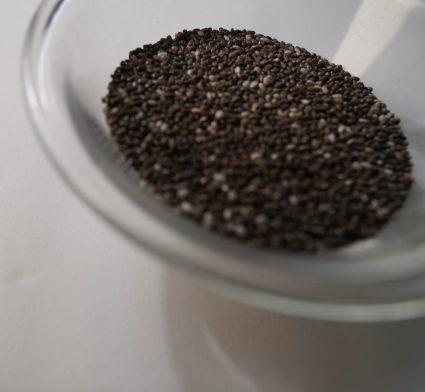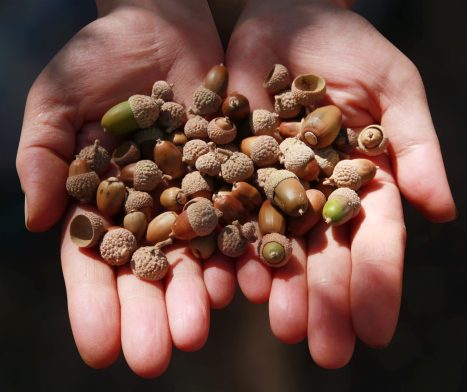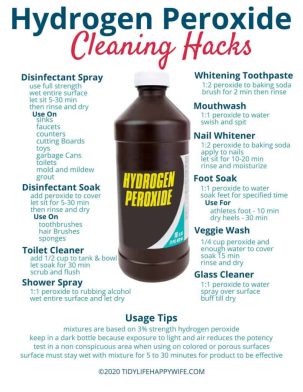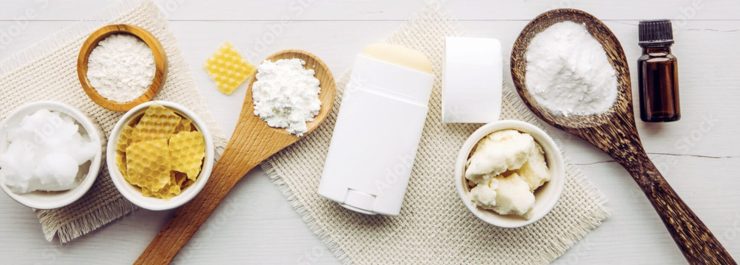 When the natural action of various lactic acid bacterias have their way with any vegetable matter, the result is a preserved and somewhat sour fermented product. From pickles to cabbage to turnips, every culture has harnessed this fermenting force and applied it to preserve their food without the need for refrigeration.
When the natural action of various lactic acid bacterias have their way with any vegetable matter, the result is a preserved and somewhat sour fermented product. From pickles to cabbage to turnips, every culture has harnessed this fermenting force and applied it to preserve their food without the need for refrigeration.
I’ll walk you through the basics of fermenting Sauerkraut. Sauerkraut has a distinctive flavor and a long shelf life and can keep for several months without the need for refrigeration or pasteurization. As a bonus, it has been proven to have several health benefits.
Here is what you’ll need: Cabbage of your choice, optional spices like dill, caraway, or fennel seeds, Kosher salt or some other type of additive-free salt, a jar with a lid, paper towel and rubber band, or a fermenting jar fitted with an airlock, rocks or weights for keeping your cabbage submerged in the brine, a zip lock baggy if you plan on using the rocks, but I find out through this process you can skip the baggie, and a knife for cutting the cabbage.
Here’s the quick recipe:
- Always wash your hands first. Then wash your vegetables, even if you grew them yourself.
- Cut the cabbage of your choice (green, savoy, napa, or red) in half. Core it. Reserve a few whole leaves for topping the mixture in the jar.
- Slice it into ¼ to ⅛ inch strips.
- Add 1 ½ tablespoon of Kosher or natural sea salt if you plan on eating it in the near term. Add two tablespoons of salt if you plan to preserve it for longer.
- Optionally add ¼ teaspoon caraway or fennel seeds or both.
- Work with your hands until you’ve worked as much of the liquid out of the cabbage as you can, and the cabbage is mushy. When you think you have mushed it up enough, mush it some more. Squeeze it up and free the juices. This salty juice is the brine, and you will need enough to completely submerge the cabbage in the jar.
- Put the cabbage in a jar or crock and place one of the whole leaves over the top.
- Press it down and add all the liquid brine until it is covered.
- Poke a few holes in the top leaf to vent the gas that will build up.
- Place your weight on top of the leaf and make sure you have a good half-inch to inch of brine and at least one-inch headspace of air in your jar.
- If you need to make, more brine dissolve one teaspoon of salt in 2 cups of water and top it off. All your vegetable matter must be below the brine through the entire fermentation process.
- Affix the lid loosely, burping lid, or fermentation airlock atop your jar.
- Now, place it in a cool spot in your kitchen and wait two to three weeks.
Then, test your sauerkraut. When it is to your liking, remove the wait, seal the jar and refrigerate. It’s that simple. Now here’s the science behind what you just did and everything that could go wrong, so you’ll want to watch to the end for that.
Lactic Fermented Sauerkraut
 There are just a few types of pickling. Pickling is the use of either salt, vinegar, or both to preserve vegetable matter. One method is with hot vinegar and salt. Another way is through multiple super salty baths and vinegar soaks. Another way involves packing the vegetables in salt then later a brine. The combinations are pretty basic and have been tested in kitchens throughout the world for centuries. They either use acetic acid or lactic acid methods or a combination of both. Most people have gravitated towards the method of lactic acid fermentation used in classic sauerkraut because it harnesses the natural process of fermentation. It retains the probiotic and nutritional qualities of the food.
There are just a few types of pickling. Pickling is the use of either salt, vinegar, or both to preserve vegetable matter. One method is with hot vinegar and salt. Another way is through multiple super salty baths and vinegar soaks. Another way involves packing the vegetables in salt then later a brine. The combinations are pretty basic and have been tested in kitchens throughout the world for centuries. They either use acetic acid or lactic acid methods or a combination of both. Most people have gravitated towards the method of lactic acid fermentation used in classic sauerkraut because it harnesses the natural process of fermentation. It retains the probiotic and nutritional qualities of the food.
In an over-processed food supply, lactic fermentations provide our bodies with the natural probiotics, enzymes, and easily accessible nutrients that nature intended us to have. Lactic acid fermentation is a metabolic process of anaerobic fermentation by which glucose or other six-carbon sugars are converted into cellular energy and the metabolite lactate, which is the lactic acid in solution. And that is just fancy talk for channeling a particular decomposing quality of food to preserve it and make the nutrients more accessible, particularly vitamins C and K. It is also low in calories and high in calcium and magnesium. It is an excellent source of dietary fiber, folate, iron, potassium, copper, and manganese. Not only does fermentation help enhance food preservation, but eating fermented foods can also boost the number of beneficial bacteria, probiotics, and bowel flora found in your gut which has been proven to boost immunity and improve overall health and weight loss. Cooking or heating food destroys these natural probiotics.
Brine
There’s much discussion about the perfect brine and the perfect salt to use. Sauerkraut just needs a 2% brine which isn’t very salty. That’s going to be about .66 ounces of salt or 5 teaspoons. I use two tablespoons to round-up, and because I tend to give my sauerkraut a light rinse before using. Some say that this washes off some of the probiotics, and it probably does, but you still get a healthy dose, and it’s more palatable to others. For this recipe, I suggest 1 ½ tablespoon salt if you plan to eat it within the next few months and two full tablespoons if you plan on keeping it for a while longer than that.
Salt
As for the salt, you want a natural salt that dissolves completely and is free of chemical additives like iodine or anti-caking chemicals. If you want to see a debate more passionate than the ones you see on political forums, ask the question of what salts to use on a pickling or canning group. You’ll get answers that range from “just use table salt because it doesn’t matter” to “use sea salt” or “use kosher salt” or “only use canning and pickling salt.” As simple as I can explain, you want to use pure salt without additives like iodine or anti-caking agents. Could you use table salt if that is all you had? Sure, but it may leave some cloudiness in your ferment. I know people who swear by  Himalayan salt, but it can leave some solid minerals that won’t dissolve properly. I sometimes use a mix of Kosher and Himalayan, but because the granule size is different, I need to weigh it rather than spooning it out. In a grid-down situation, you might be able to use a salt lick for livestock, but there are probably some impurities and chemical additives in those. I would have to be desperate to go that route, and I would probably try and dilute and reprocess those non-food grade salts to remove impurities. Just don’t do that if it’s not a crisis situation. Get some good salt with no measurable impurities. You could harvest salt from ocean water for cleaner salt, or you could buy nice sea salt. I will link to a few salt options in the description below. The selection of salt is up to you. I recommend Kosher, Sea, or Himalayan salts. These are going to be the freest from impurities.
Himalayan salt, but it can leave some solid minerals that won’t dissolve properly. I sometimes use a mix of Kosher and Himalayan, but because the granule size is different, I need to weigh it rather than spooning it out. In a grid-down situation, you might be able to use a salt lick for livestock, but there are probably some impurities and chemical additives in those. I would have to be desperate to go that route, and I would probably try and dilute and reprocess those non-food grade salts to remove impurities. Just don’t do that if it’s not a crisis situation. Get some good salt with no measurable impurities. You could harvest salt from ocean water for cleaner salt, or you could buy nice sea salt. I will link to a few salt options in the description below. The selection of salt is up to you. I recommend Kosher, Sea, or Himalayan salts. These are going to be the freest from impurities.
What Can Go Wrong?
The things that can go wrong occur because your food is above the brine, exposed to air, or too hot. If you see mold or fuzzy mold on the surface, some people scoop that off and continue. I throw it out. I would rather waste a little food in times of abundance than take a chance on some gastrointestinal distress. If something smells or tastes moldy or unappetizing, trust your senses and toss the batch. You may see some natural yeast rafts forming on the top of the water. If that scum is white and a bit “fluffy,” then it’s likely to be Kahm yeast. That’s a colony of different species of yeasts. While Kahm yeast isn’t harmful, it can indicate that there is a problem with your ferment. Kahm yeast is safe to eat as long as there are no molds present and the ferment tests at a pH of 4 or lower. Kahm yeast, however, can cause a disagreeable flavor or aroma. Kahm yeast is not a type of mold but rather an aerobic yeast that forms when the sugar is used up, and the PH of the ferment drops because of the lactic acid formation. It tends to develop more often on open-air ferments, when the temperature is too warm, or in a low salt brine.
You can tell the difference between yeast and mold. Mold will be the blue or other colored furry spots floating in the mixture. That would be something to worry about. If your food all remains submerged in the brine, everything should be fine. Make sure your fermenting product remains in a temperature stable and cool temperature environment. Ensure your brine’s salt percentage is

above 2% for sauerkraut and 3% for other foods. I will link to a brine calculator in the comments below. Weighing your salt will always be more exact, but err on the side of slightly saltier if measuring by the spoonful. Finally, make sure that you use a closed fermenting system like an airlock or burping lid. With each of those measures, the chances of yeast or mold taking hold, even anaerobic varieties, are minimized. If you only use a tightened-down lid and ring, make sure to burp it daily to vent off the gas.
Sometimes it can get so active it bubbles over. If it does, you may need to take some out and pour more brine, and put your weights down better. I have started fermenting so much that I finally broke down and purchased some fermentation weights. I’ll link to those in the comments below. I like them very much. Before that, I would boil a good smooth rock in salt water for ten minutes and use that. That’s probably not the best method, but it’s probably what our ancestors did. I tried putting the rock in a ziplock baggy, but I found this method acted as a wick and constantly brought brine to the surface. Keep it in the brine and cover it. If it is not airtight and you use a paper towel and rubber band or a loose lid, expect that you might see some Kahm yeast on the top.
If you want to process your sauerkraut for really long storage. Make it this way but with a 3% or higher brine. Then can it with a heated water bath. You will lose most of the probiotics, but it will have an incredible shelf-life in your pantry. The heat will dumb the fermentation process and pasteurize your product. This is similar to what you’d get in the stores if you also added a shot or two of vinegar.
 Sauerkraut is by far the easiest and most hands-on foray into the world of fermented foods. It has been similarly made for thousands of years. Just salt and cabbage, really, is all you need. I will pickle peppers, green tomatoes, and even purslane in a future segment, so look for that. In the meantime, learn this simple recipe and skill. Try it at least once and tuck it away for when you ever need it.
Sauerkraut is by far the easiest and most hands-on foray into the world of fermented foods. It has been similarly made for thousands of years. Just salt and cabbage, really, is all you need. I will pickle peppers, green tomatoes, and even purslane in a future segment, so look for that. In the meantime, learn this simple recipe and skill. Try it at least once and tuck it away for when you ever need it.
Learn how to make it, and let me know in the comments below how it went. Do you have a different recipe? If it’s not a family secret, share it with us in the comments. If you’d like me to make something else in my prepping kitchen, garden, or yard, let me know in the comments below. I try to read many of the comments to bring you fresh ideas and new skills. So, make some sauerkraut today and bring your prepping knowledge to a whole new level. Keep building your skills in the prepping kitchen…
Brine Calculator: https://myfermentedfoods.com/tools/brine-calculator/
Fermentation Lids: https://amzn.to/3z02fZd
Fermentation Weights: https://amzn.to/3xBZZa6
Salt Options:
https://amzn.to/3kj56bB
https://amzn.to/3z1jb18
https://amzn.to/3ird7sv
https://amzn.to/3i4cbde
Enjoy!










